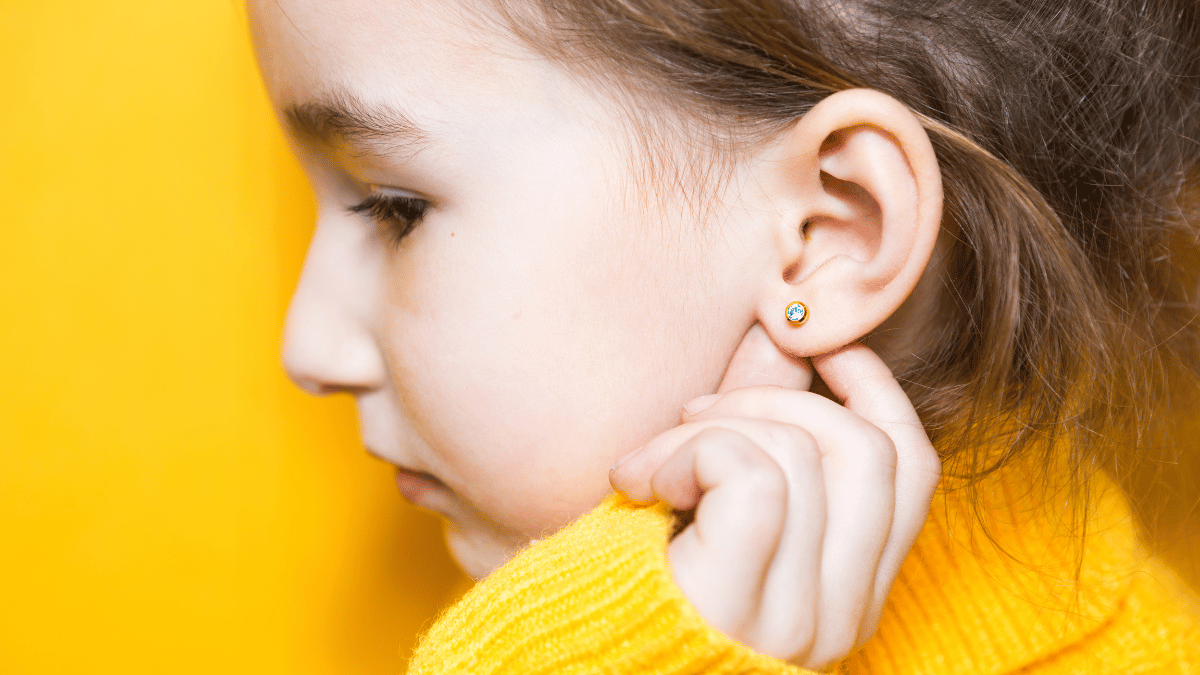
Ear piercings are a popular form of self-expression and adornment that have been embraced by cultures worldwide for centuries. Whether it’s a delicate stud or a trendy hoop, ear piercings can enhance one’s personal style and add a touch of individuality. However, as with any body modification, there may come a time when you find yourself wondering, “When can I change my ear piercing?” This question is not only pertinent to those who are new to the world of ear piercings but also to individuals who already have one or more piercings and wish to switch up their jewelry.
Why people get ear piercings
One of the main reasons why people get ear piercings is for self-expression and personal style. Ear piercings have become a popular way to accessorize and enhance one’s appearance. From simple stud earrings to elaborate ear cuffs, there are endless options to choose from that can reflect an individual’s personality, interests, or fashion taste.
Another common motive for getting ear piercings is cultural or traditional significance. In many cultures around the world, ear piercings hold deep-rooted meanings and symbolize various aspects such as coming-of-age rituals, marital status, or religious affiliations. People embrace these traditions as a way to honor their heritage or connect with their roots. Additionally, some individuals opt for ear piercings due to the belief in certain health benefits associated with specific acupuncture points located on the ears. This practice known as auriculotherapy suggests that piercing these points may alleviate pain, promote relaxation, or stimulate other positive effects within the body.
Regarding when you can change your ear piercing, it is essential to allow sufficient time for proper healing before swapping out jewelry. The exact duration varies depending on the location of the piercing and individual healing abilities but typically ranges from 6 weeks to 3 months. Attempting to change your earring too soon may lead to complications such as infection or irritation. It is always advisable to consult with a professional piercer or follow aftercare instructions diligently before considering any changes in jewelry during the initial healing period.
Healing process:
When it comes to getting a new ear piercing, understanding the healing process is crucial. After getting a fresh piercing, it is important to remember that patience is key. On average, it takes about 6-8 weeks for an earlobe piercing to heal fully. However, this timespan can vary depending on individual factors such as overall health and aftercare routine.
During the initial healing period, it is crucial to avoid changing your ear piercing too soon. Changing jewelry prematurely can disrupt the healing process and increase the risk of infection or irritation. It is recommended to wait until the healing period has passed before attempting any changes. If you are unsure whether your piercing is ready for a change, consulting with a professional piercer can provide valuable guidance based on their expertise and experience. Following a diligent aftercare routine and allowing sufficient time for the wound to heal ensures optimal results and reduces chances of complications down the line. Remember: patience pays off when it comes to maintaining healthy and beautiful piercings!
How long it takes to heal
The healing time for ear piercings can vary depending on the location and type of piercing. On average, it takes about 6 to 8 weeks for a standard lobe piercing to fully heal. However, cartilage piercings, such as helix or tragus piercings, may take longer – around 3 to 9 months. It’s crucial to give your piercing enough time to heal before attempting to change the jewelry.
During the healing process, it’s important to follow proper aftercare instructions provided by your piercer. This includes cleaning the piercing with a saline solution or mild soap and water twice a day, avoiding touching or twisting the jewelry unnecessarily, and refraining from swimming in pools or hot tubs until healed. Rushing the healing process by changing jewelry too soon can lead to irritation, infection, and even scarring. If you are unsure whether your piercing is fully healed or ready for a jewelry change, it is always best to consult with a professional piercer. They will be able to assess your individual case and provide guidance based on their expertise. Remember that every person’s body heals differently, so it’s essential not to rush the healing process and prioritize your health over aesthetics when considering changing an ear piercing.
Signs that it’s healing properly
One of the clear signs that your ear piercing is healing properly is the absence of any pain or discomfort. In the initial stages after getting a new piercing, it’s normal to experience some tenderness and soreness around the pierced area. However, as time goes by and the healing process progresses, you should start to notice a significant reduction in pain. If your ear piercing continues to hurt or feels swollen after several weeks, it may indicate an infection or improper healing. Another positive sign that your ear piercing is healing well is the absence of any discharge or pus. Initially, you might notice a small amount of clear fluid coming out of the pierced hole, which is just a part of the natural healing process. However, if you observe any thick yellow or greenish discharge accompanied by foul odor or excessive redness around the piercing site, it could be an indication of infection.
Additionally, when your ear piercing starts forming a crust on top and around the jewelry, it shows that it’s progressing towards proper healing. This crust formation occurs due to dried lymph fluid mixed with dead skin cells forming a protective layer over the wound. As long as this crust remains dry and does not get dislodged easily while cleaning or moving your jewelry gently, it signifies that your ear piercing is healing appropriately.
Factors that can delay the healing process
One of the factors that can delay the healing process of an ear piercing is improper aftercare. Failing to clean the piercing regularly, using harsh cleaning solutions, or touching it with dirty hands can introduce bacteria and increase the chance of infection. Additionally, ignoring any signs of infection such as redness, swelling, or discharge can further hinder the healing process. Another factor that can delay healing is changing jewelry too soon. It’s crucial to give your body enough time to heal before swapping out your earrings. Changing the jewelry too early can cause irritation and disrupt the delicate healing process, potentially leading to complications such as migration or rejection of the piercing. If your piercing has gotten infected, it’s important to see an ENT doctor right away. Infected earrings are a serious medical risk, and you can get infections from bacteria that have come into contact with the piercing.
Overall, proper aftercare practices and patience are key in ensuring a healthy and timely healing process for your ear piercing. Following guidelines provided by professionals and being mindful of potential risk factors will significantly contribute to a successful outcome. For most ear piercing operations, the procedure itself is relatively painless. However, complications can occur that may require additional attention. As a result, it’s important to adhere to proper aftercare practices.
When can I change my earrings?
Changing earrings can be an exciting and fun way to switch up your look, but it’s important to know when the right time is to make the switch. The general rule of thumb is that you should wait at least six weeks before changing your earrings after getting a new ear piercing. This timeframe allows for proper healing and reduces the risk of infection or other complications. However, it’s essential to listen to your body and pay attention to any signs of discomfort or irritation. If you experience redness, swelling, discharge, or pain around the piercing site, it’s best to hold off on changing your earrings and consult with a professional piercer or healthcare provider. If you do decide to make the switch, you’ll need to be careful not to accidentally damage or scar your piercing. A piercing after getting a new earring is more delicate than one before, so it’s best to take extra care in case you accidentally hurt yourself.
Additionally, some ear piercings may require more extended healing times than others. For example, cartilage piercings often take longer to heal compared to lobe piercings. It’s crucial to follow specific aftercare instructions provided by your piercer and allow enough time for complete healing before considering changing earrings in these cases. Remember that patience is key when it comes to caring for newly pierced ears!
Conclusion: Taking care of your new piercing
In conclusion, the timing for changing your ear piercing is crucial to ensure proper healing and avoid potential complications. It is generally recommended to wait at least 6-8 weeks before changing a new ear piercing, allowing sufficient time for the wound to fully heal. However, this timeframe may vary depending on individual healing processes and the type of piercing. It is essential to consult with a professional piercer or healthcare provider before making any changes to your ear jewelry. By following their guidance and taking proper care of your piercing, you can minimize the risk of infection or other complications. Remember, patience is key when it comes to ear piercings – waiting for the right time will ultimately result in a successful and beautiful outcome.
ALSO READ / kitchen bath remodeling contractors





